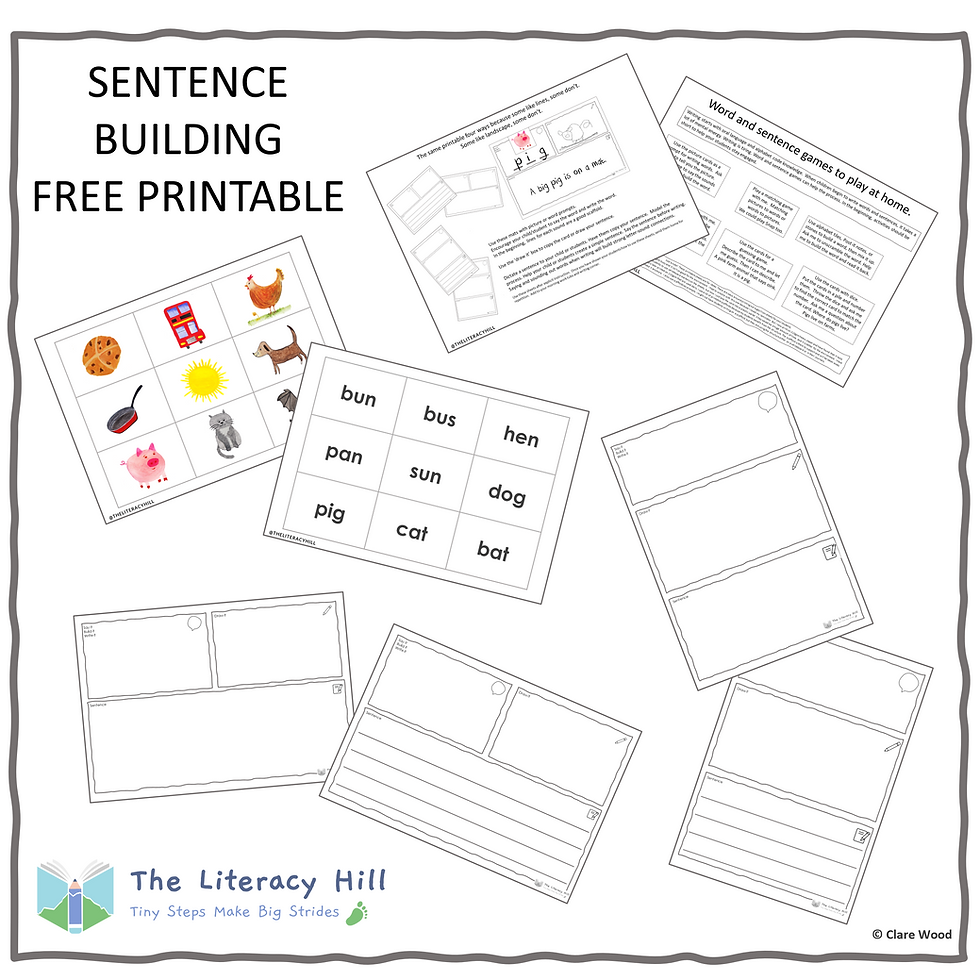KNOW YOUR LITERACY LINGO
- Developers Devzmelbourne

- Sep 5, 2022
- 4 min read

The world of literacy learning is awash with jargon. Many buzzwords float around classrooms, and a discussion with your child or your child’s teacher might make you feel like you need to go back to school just to keep up.
This post is part of a longer article recently published in Dystinct magazine.
Here are the top jargon words and phrases that my families struggled with last year. I am forever thinking about how to explain and simplify concepts, so these definitions are slightly different from the article. My aim is to simplify literacy learning for the families in my care.
The Alphabetic Principle
The starting point of any alphabetic writing system. The understanding that there are predictable relationships between written letters and speech sounds. The alphabet is a code that must be cracked and initial phonics instruction is the most effective way for children to learn.

Phonics
‘Phon’ means phone-sound (Greek) plus ‘ic’ meaning having to do with. Instruction that shows children how speech sounds relate to the written word. Phonics instruction kickstarts the learning to read and spell process. All children benefit from initial phonics instruction.

Phonological Awareness
An umbrella term that includes speech sound (phoneme) awareness, rhyming, alliteration, syllables, and onset and rime. The most critical skills are segmenting sounds to spell and blending sounds to read, which are crucial for early literacy development.
Phoneme Awareness
A category of phonological awareness. It is the ability to notice, segment, and identify the difference between sounds within words. This knowledge helps students develop the blending and segmenting skills needed to read the printed word.

Phoneme
A discrete speech sound. The smallest unit of sound within words when we speak. We have to help all children reach the phoneme level, but this isn’t natural because we don’t talk in segmented sounds. Learning to pull words apart and blend phonemes to read words helps build the decoding skills needed for fluent reading.

Grapheme
A letter or letter string that represents what phonemes look like on paper.

Digraph
Two letters that represent a speech sound as in ‘oa’ in the word boat.
Trigraph
Three letters that represent a speech sound as in ‘dge’ in the word hedge.
Tetragraph
Four letters that represent a speech sound as in ‘ough’ as in the word dough. This one is controversial, and some refute that tetragraphs even exist. The ‘GH’ in the letter strings augh, aigh, eigh, ough hark back to Old English and the sound value of the ancient letter yogh was /x/. Now the ‘GH’ are silent letters, and no speech sounds are associated with these letters but it makes sense to add them to the vowel digraph to simplify the learning to spell process.
Renowned linguists David Crystal and Edward Carney both discuss these grapheme-phoneme correspondences and state that it can be helpful for students to know them to use analogy as a strategy for spelling.
You can find out more information in Spell It Out – chapter 23, Famous Spellings and 24 Spelling Rules, by David Crystal. An easy read about spelling. David Crystal has a witty sense of humour that lightens the load on this rich topic. As he states on page 173,
“Etymology explains why there is a problem, but it provides no teaching solution, especially today when classical languages are not a routine part of the school curriculum.”
Instruction that informs about spelling patterns, exceptions, and a sprinkle of word history might just do the trick for most, especially in the upper primary years when students can ably decode.
Edward Carney’s Survey of English Spelling is a heavy but thought-provoking read. He has a very organised contents page that is divided into speech to text or text to speak parts, making it easy for the reader to find exactly what they need.

Morphology
The study of words and parts of words, ‘-ology’ words always sound rather grand, but morphology can start with the simplest of ideas, such as how to make a regular plural in the foundation year to word roots by the time a child is in the upper years of primary school. The smallest unit of meaning is a morpheme. The instruction should be cumulative. As students move through school and read more, morphology should be a mix of informal discussion and explicit instruction. Students should be taught how to group words by families to help comprehension and meaning. This type of instruction helps students connect the dots. For example, instruction about the root ‘hydro’ shows students that all words containing that root have something to do with water — hydrogen, hydrotherapy, hydroelectric.
Orthography
The correct spelling of words. From Greek meaning ‘ortho’ correct or straight, ‘graphy’ writing. When we talk about the orthography of a language, we discuss how we visually represent our language on paper. Sometimes the spelling of words can be correct but is in the wrong context. Spelling instruction is a crucial piece of the literacy puzzle in years 3-6.
Orthographic Mapping
The mental process we use to store words for automatic retrieval. Research now suggests that rote memorisation of whole words is not how we learn to read. Literacy research Linnea Ehri states,
“To form connections and retain words in memory, readers need some requisite abilities. They must possess phonemic awareness…particularly segmentation and blending. They must know the major grapheme-phoneme correspondences of the writing system…application of these strategies activates orthographic mappings to retain the words’ spellings, pronunciations, and meanings in memory.” Pg 7
Ehri, L.C. (2014) Orthographic mapping in the acquisition of sight word reading, spelling memory, and vocabulary learning. Scientific Studies of Reading 18(1).







Comments